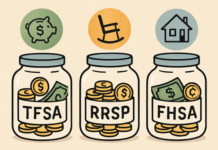Meet Liam — a hypothetical branding freelancer. His keen eye for design, exceptional portfolio and silver tongue have secured him impressive clients. Despite his success, he faces poor cash flow and missed business opportunities. He has difficulty turning work down, even if it is not a good creative fit or the client’s budget is unrealistic.
Scope creep eats into his profits, but he worries adjusting prices will alienate clients. He relies on handshake deals to demonstrate integrity and streamline onboarding but has dealt with overdue invoices and payment disputes as a result. Afraid of losing business in the face of cash flow problems, he has not raised his prices despite his experience and quality improving.
Liam’s story may not be real, but it is relatable. As a business professional, you often ask yourself how to manage your pricing and contracts better. One thing is sure — you can’t do everything yourself. You need expert guidance to capture your true value. What is the best revenue management firm for someone in your situation?
The High Price of Undercapturing Value
Leaving money on the table means missing out on potential revenue and business opportunities. Pricing structures that do not resonate with consumers can lead to missed sales, payment disputes or low buyer retention, keeping you from propelling your business forward.
Eliminating lost opportunity costs could significantly improve your bottom line. If you can capture your true value, you can make your big wins even bigger. You probably price your products or services based on the standard selling price formula. Adding your desired gross margin to the cost of goods sold glosses over the finer details.
How do you know if you are undervaluing your service? Say developing a solution costs you $25,000 at $150 an hour. After a 20% markup, you profit $5,000. Your client’s sales increase tenfold, dramatically increasing their revenue. You were responsible for creating tremendous value but saw virtually nothing. Are your clients willing to pay more than they currently do?
Basing your hourly rate on your time and material expenses instead of your service value leaves money on the table. You must also consider your other financials. Are you overspending due to a lack of budgeting? Can you save money without raising your product price? Even if you identify opportunities, how do you translate them into real-world outcomes?
Signs You’re Leaving Money on the Table
Subpar revenue management looks different depending on your industry, business objectives and present growth stage. Are you attracting investors, securing contracts, selling products or planning your exit? Your answer will influence your intervention strategy. Common signs include poor value articulation, weak negotiation and improper execution.
Understanding Value Leakage
Value leakage is the difference between what you earned and what you expected to earn from a project, agreement, or business initiative. It translates to a loss of value, manifesting as reduced profits, increased costs or missed opportunities. Generally, it is a symptom of a larger problem. You can trace it back to poorly implemented strategies or bad business decisions.
Applying Value-Based Pricing
With value-based pricing, you set the price of your product or service based on its perceived value to the customer rather than on competitor pricing or production costs. Research suggests it is among the most profitable pricing frameworks for those in business environments, but the implementation rate is relatively low.
You cannot force clients to say “yes,” but you can present proposals that make them think doing so is in their best interest. To do so, you must understand who they are. Consider their pain points, preferences, motivations and feelings. Once you recognize their mindset, you can frame your offerings as the solutions to their problems.
Common Mistakes That Affect Profitability
Making decisions without all the facts is a common mistake that can impact your profitability. You cannot find a solution if you cannot see the underlying information. Is your current approach practical? Can you afford to make a change? You can only answer these questions confidently with data-driven decision-making.
Facts and figures are convincing, but business is more than a numbers game. Communicating your core value is crucial for value-based pricing. Why should shoppers choose you over your competitors? Promotions and quick gimmicks can temporarily increase sales but are not long-term solutions.
Another hidden mistake is selling a product or service as-is with no upgrades or premium options. Even if a one-size-fits-all solution sells well, there are always those willing to pay more for extra features. Think of it like how some people buy ingredients and cook dinner themselves, while others pay for the convenience of premade meals.
Strategies for Capturing Your True Value
The Harvard Business School’s value stick framework has four core components — willingness to pay, price, cost and willingness to sell. A person’s willingness to pay represents the highest price they will accept. The difference between it and the product cost is known as customer delight, which denotes the level of brand enthusiasm or loyalty they feel after their purchase.
Companies want to maximize profits, but squeezing people for every last penny causes unnecessary friction. Boosting customer delight is necessary for incentivizing repeat purchases.
Business professionals can increase their profit margins by other means. They can raise prices, lower costs, increase customers’ willingness to pay or reduce suppliers’ willingness to sell — the lowest price they are willing to accept before it no longer makes sense to pursue a sale. Numerous strategies exist for capturing true value this way.
Reevaluating pricing is a go-to method for an immediate win. Ask yourself what consumers have budgeted. Are they flexible? Where are they willing to compromise? You could optimize cash flow by adopting a tiered framework or subscription model.
First, you must identify consumers’ selection criteria. Are they after the lowest price no matter what, or do they prefer quality over everything? Dig deeper than surface-level questions. Why is affordability is their priority? How does that align with the pain point your product aims to solve? You can only convince them if you truly understand them.
Quick Wins and Long-Term Strategies
Get familiar with the psychology of pricing. Say you quote $15,000 for a residential construction project, and the prospective customer balks at the price. You tell them you can drop the price by 20%. They are still hesitant, so you come down another 10%. Instead of feeling pleased, they feel taken advantage of because you did not start with the bottom-line price.
You should justify your price by highlighting your material quality, fast turnaround time or white-glove service. If necessary, you can offer a 20% discount available for the next 48 hours. The time limit incentivizes quick action, helping you win the bid.
Getting caught in a race to the bottom will counteract any attempt to establish high perceived value. Underbidding or undercutting the competition is counterintuitive. You secure business, but at what cost? You may have to cut corners to break even, damaging your reputation and customer retention rate. Besides, you do not want to be considered the “cheap” option.
For example, if you charge $2,500 for a service to secure contracts, you will have to rush to complete the jobs in three months because you need the money. In a year, you would make $10,000. If you charged $6,000, you could lose half your clients and still earn more.
The Value of Eliminating Advice Siloes
All advice from tax advisors, human resource professionals, insurance agents and loan providers exists in siloes. Even if they excel in their practice areas, they fail to see the bigger picture. Disconnected guidance creates blind spots that impact financial planning or diminish your selling price.
The best revenue management firms consolidate all relevant financial information, eliminating advice siloes. On top of making strategies actionable, they turn plans into tangible deliverables to generate real-world outcomes. They can help you realize a positive return on investment (ROI) or boost your sales.
What Is the Best Revenue Management Firm?
Many businesses leave money on the table, even if they know common mistakes. Unifying financial information and understanding customer psychology is complicated, especially for those with limited resources. Consultants ease the burden, helping them maximize profitability. So, what is the best revenue management firm?
1. Revenue Management Labs
Since Revenue Management Labs serves over 25 industries — both business-to-consumer (B2C) and business-to-business (B2B) — its expertise far surpasses specialty consultants. The entity’s client-centric, results-driven approach establishes it as the best revenue management firm. On average, its clients see a 300% return on investment.
It offers pricing optimization, mix management and discounts support. Its capabilities include pricing strategies and business transformation. Whether you need to identify opportunities for immediate wins or build your revenue growth management capabilities, it can help. All engagements are custom and include an execution plan to help realize positive ROI.
One case study involves an animation software company experiencing stagnant revenue growth. Its simple two-tiered pricing model did not resonate with subscribers. Revenue Management Labs helped it understand price sensitivity and the competitive landscape, raising revenue by 100% and increasing the average price realized by 130%.
2. Cadent Consulting Group
While Cadent Consulting Group only serves the consumer goods industry, its considerable expertise, advanced research capabilities and broad network of industry contacts make it one of the top choices for revenue management consulting. Its capabilities include strategic pricing, trade optimization and assortment optimization.
The team’s methodology, procedures, and tools are based on decades of marketing and sales leadership in the retail space. They leverage competitive benchmarking, organization trading and customer planning support to enhance promotional ROI. Each engagement includes execution-ready client deliverables for seamless implementation.
3. Boston Consulting Group
Boston Consulting Group is a well-known global consulting firm that serves B2B and B2C companies. Although it does not specialize in this type of consulting, it has a dedicated pricing and revenue management team. It helps you develop a custom net revenue management strategy that reflects your business objectives and market.
Its revenue growth management framework deploys five levers — pack price architecture, promotion management, active mix management, trade optimization, and pricing by brand and channel. Considering your online and in-store presence, it focuses on key performance indicators and novel methodologies to deliver a bottom-line impact.
One past client — an enterprise software provider — wanted to improve monetization and discounting. The BCG consultants replaced the outdated pricing structure with a tiered model to differentiate offerings and reduced the number of pricing tiers by 70%. As a result, they increased annual contract value by 10% and improved deal velocity by 20%.
Building a Value-Centric Workplace Culture
The shift toward an outcome-based business model impacts how professionals define and capture value. Navigating this change is time-consuming and complex. Thankfully, since they know what the best revenue management firm is, they do not have to do it alone. They can source expert guidance to capture their actual value.
Find a Home-Based Business to Start-Up >>> Hundreds of Business Listings.















































